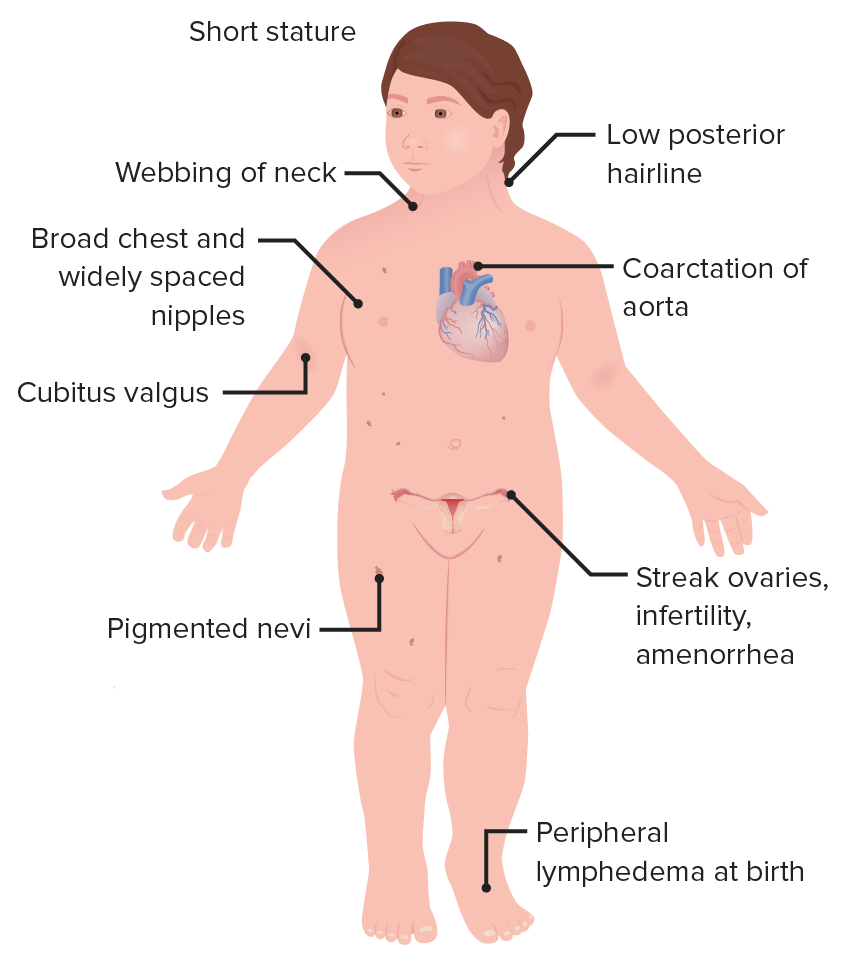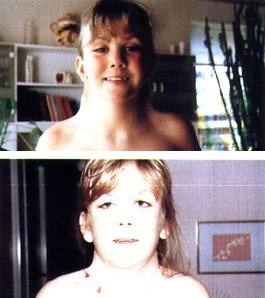Turner syndrome is a genetic condition affecting women, in which 1 X chromosome X chromosome The female sex chromosome, being the differential sex chromosome carried by half the male gametes and all female gametes in human and other male-heterogametic species. Basic Terms of Genetics is partly or completely missing. The classic result is the karyotype Karyotype The full set of chromosomes presented as a systematized array of metaphase chromosomes from a photomicrograph of a single cell nucleus arranged in pairs in descending order of size and according to the position of the centromere. Congenital Malformations of the Female Reproductive System 45,X with a female phenotype Phenotype The complete genetic complement contained in the DNA of a set of chromosomes in a human. The length of the human genome is about 3 billion base pairs. Basic Terms of Genetics. Turner syndrome is associated with decreased sex Sex The totality of characteristics of reproductive structure, functions, phenotype, and genotype, differentiating the male from the female organism. Gender Dysphoria hormone levels and is the most common cause of primary amenorrhea Amenorrhea Absence of menstruation. Congenital Malformations of the Female Reproductive System. Those affected may have a host of medical anomalies involving, but not limited to, the cardiac, renal, reproductive, skeletal, and lymphatic systems. Characteristic appearance is that of a woman with short stature, webbed neck Neck The part of a human or animal body connecting the head to the rest of the body. Peritonsillar Abscess, broad chest with widely spaced nipples, low posterior hairline, and peripheral edema Peripheral edema Peripheral edema is the swelling of the lower extremities, namely, legs, feet, and ankles. Edema of the hands and feet. Genetic testing Genetic Testing Detection of a mutation; genotype; karyotype; or specific alleles associated with genetic traits, heritable diseases, or predisposition to a disease, or that may lead to the disease in descendants. It includes prenatal genetic testing. Myotonic Dystrophies confirms the diagnosis. Treatment consists of hormone replacement therapy Hormone Replacement Therapy Hormone replacement therapy (HRT) is used to treat symptoms associated with female menopause and in combination to suppress ovulation. Risks and side effects include uterine bleeding, predisposition to cancer, breast tenderness, hyperpigmentation, migraine headaches, hypertension, bloating, and mood changes. Noncontraceptive Estrogen and Progestins.
Last updated: Feb 19, 2025

Characteristic features of a girl with Turner syndrome
Image by Lecturio.
Girl with Turner syndrome before and immediately after surgery for neck webbing
Image: “Girl with Turner syndrome” by Johannes Nielsen. License: CC BY 2.0The following conditions are differential diagnoses of Turner syndrome:
The following condition is related to Turner syndrome as it also causes gonadal insufficiency due to a chromosomal abnormality: